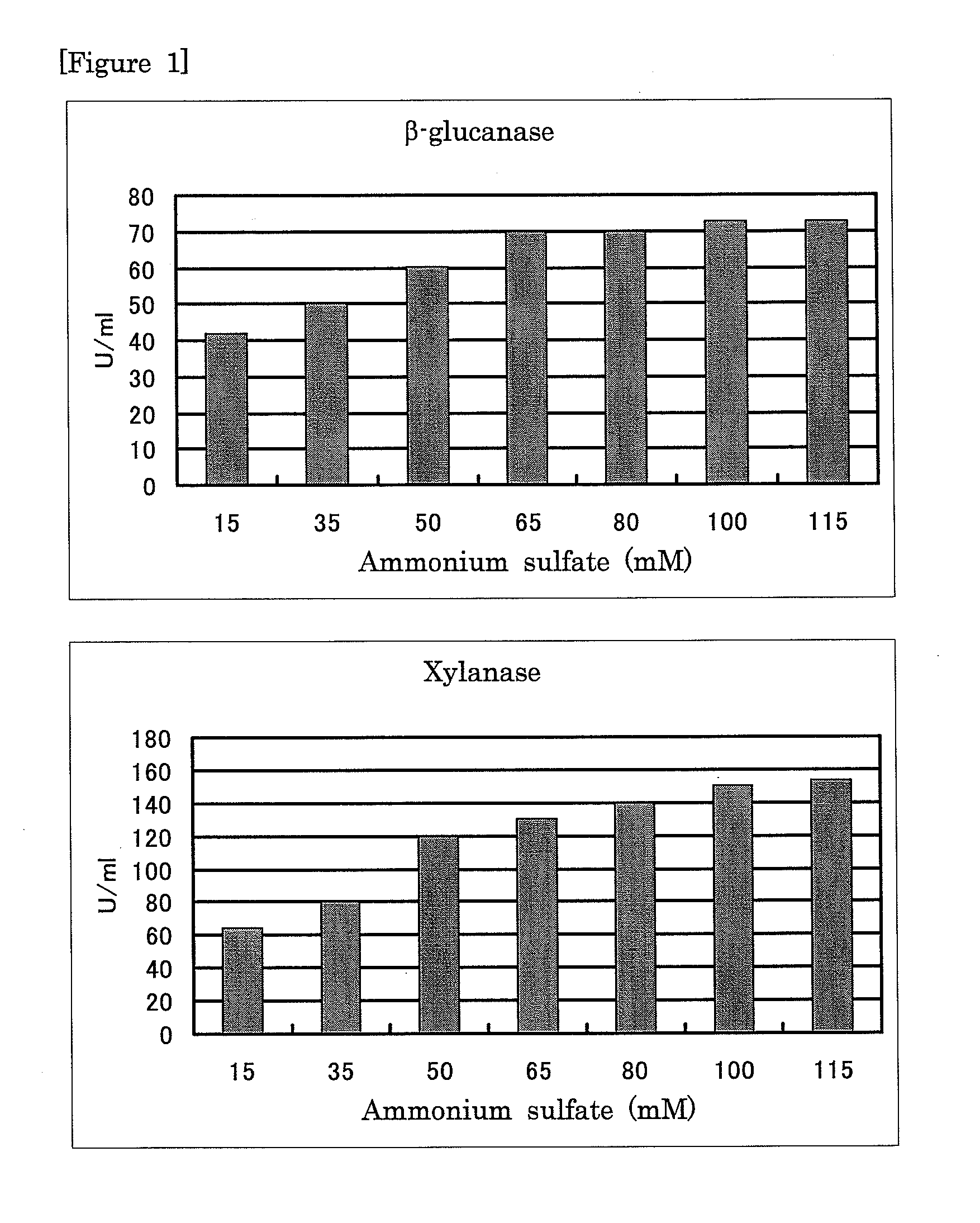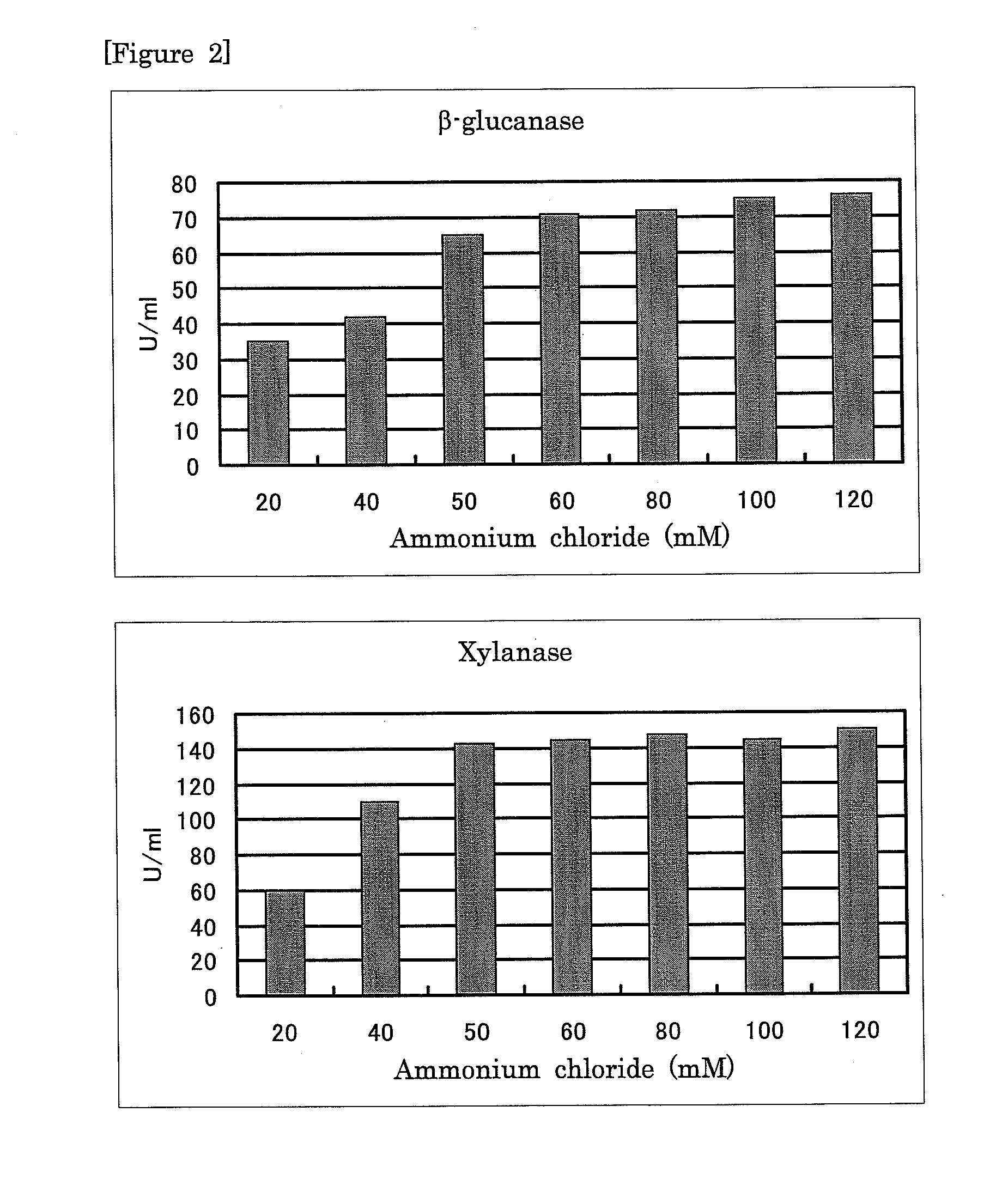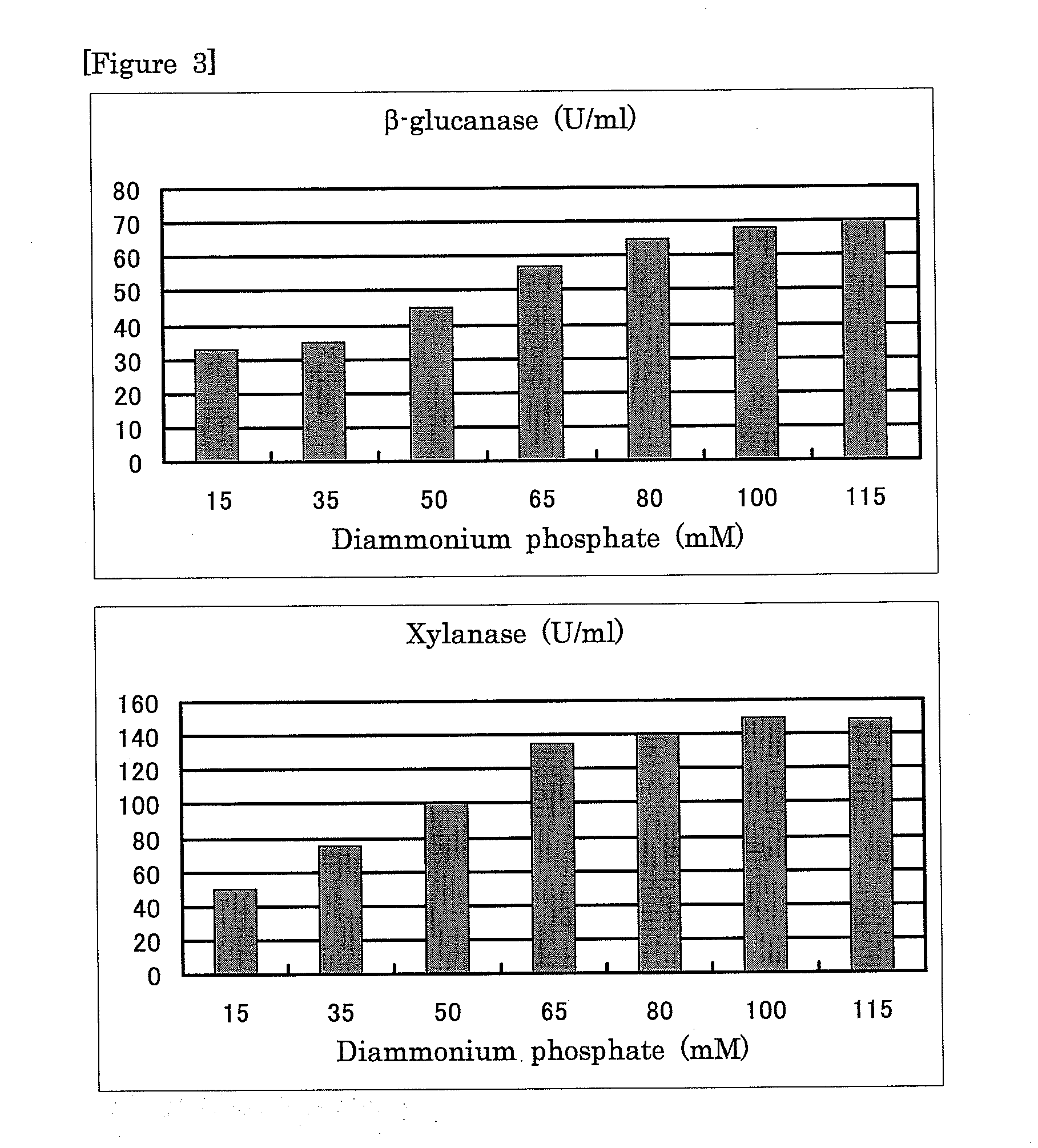B-glucanase and xylanase preparation method using wheat bran, and liquid culture medium
a technology which is applied in the field of b-glucanase and xylanase preparation methods using wheat bran, and liquid culture medium, can solve the problems of high cost, limited material usable as a carbon source and pretreatment methods, and high cost of crystalline cellulose, so as to reduce food industrial waste and effectively use wheat bran
- Summary
- Abstract
- Description
- Claims
- Application Information
AI Technical Summary
Benefits of technology
Problems solved by technology
Method used
Image
Examples
example 1
[0084]Wheat bran (manufactured by Showa Sangyo Co., Ltd.) was pulverized, and lignin was removed by autoclave treatment in a 0.3 N aqueous solution of sodium hydroxide at 121° C. for 15 minutes. The resultant was sufficiently washed with water, followed by drying.
[0085]Trichoderma reesei QM9414 (NBRC 31329) was cultured on a potato dextrose agar medium at 28° C. for 7 days to sufficiently form spores. In a Mandel medium, crystalline cellulose, a carbon source, was replaced with 5% delignified wheat bran (5 g / 100 mL), and ammonium sulfate, a nitrogen source, was added thereto so that the molar concentration of amino nitrogen would be each 15 mM, 35 mM, 50 mM, 65 mM, 80 mM, 100 mM or 115 mM. The obtained solutions were adjusted to pH 4.8 using phosphoric acid or sodium hydroxide, and 100 mM of liquid culture media were prepared in 500 mL baffled Erlenmeyer flasks. A loopful of the cultured Trichoderma reesei was inoculated into the liquid culture media, and they were cultured with sha...
example 2
[0089]In a Mandel medium, crystalline cellulose, a carbon source, was replaced with 5% delignifled wheat bran (5 g / 100 mL) obtained in the same manner as in Example 1, and ammonium sulfate, a nitrogen source, was replaced with ammonium chloride, and the ammonia chloride was added thereto so that the molar concentration of ammonia nitrogen would be each 20 mM, 40 mM, 50 mM, 60 mM, 80 mM, 100 mM or 120 mM, and liquid culture media were prepared in the same manner as in Example 1. Trichoderma reesei QM9414 (NBRC 31329) was cultured on a potato dextrose agar medium at 28° C. for 7 days to sufficiently form spores. A loopful of the spores was inoculated into the liquid culture media, and they were cultured with shaking at 28° C., 180 rpm for 7 days. The culture liquids were centrifuged on day 7, and β-glucanase activity and xylanase activity were determined in the same manner as in Example 1. The results are shown in FIG. 2.
example 3
[0090]In a Mandel medium, crystalline cellulose, a carbon source, was replaced with 5% delignified wheat bran (5 g / 100 mL) obtained in the same manner as in Example 1, and ammonium sulfate, a nitrogen source, was replaced with diammonium phosphate, and the diammonium phosphate was added thereto so that the molar concentration of ammonia nitrogen would be each 15 mM, 35 mM, 50 mM, 65 mM, 80 mM, 100 mM or 115 mM, and liquid culture media were prepared in the same manner as in Example 1. Trichoderma reesei QM9414 (NBRC 31329) was cultured on a potato dextrose agar medium at 28° C. for 7 days to sufficiently form spores. A loopful of the spores was inoculated into the liquid culture media and they were cultured with shaking at 28° C., 180 rpm for 7 days. The culture liquids were centrifuged on day 7, and β-glucanase activity and xylanase activity were determined in the same manner as in Example 1. The results are shown in FIG. 3.
PUM
| Property | Measurement | Unit |
|---|---|---|
| Molar density | aaaaa | aaaaa |
| Molar density | aaaaa | aaaaa |
| Concentration | aaaaa | aaaaa |
Abstract
Description
Claims
Application Information
 Login to View More
Login to View More - R&D
- Intellectual Property
- Life Sciences
- Materials
- Tech Scout
- Unparalleled Data Quality
- Higher Quality Content
- 60% Fewer Hallucinations
Browse by: Latest US Patents, China's latest patents, Technical Efficacy Thesaurus, Application Domain, Technology Topic, Popular Technical Reports.
© 2025 PatSnap. All rights reserved.Legal|Privacy policy|Modern Slavery Act Transparency Statement|Sitemap|About US| Contact US: help@patsnap.com



